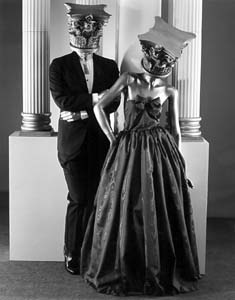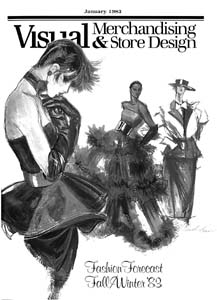What happened to Baby Boomer idealism? The Hippies of the 1960s and 70s had become the Yuppies of the 1980s – materialistic, narcissistic and acquisitive.
The “Me” generation was reaching its earnings peak and trading beads and flowers for power ties and dress-for-success outfits. Shopping became a sport, with fashion as the ultimate prize.
But over-optimism fueled over-spending, over-borrowing and over-expansion – ultimately leading to overstoring. A rash of liquidations, acquisitions, mergers and restructuring plagued the department store world.
Edward Finkelstein boldly gained private ownership of Macy's via a $36 million leveraged buyout. Robert Campeau, who lost Macy's to Finkelstein, bought Allied Stores, at the time the third-largest retailer in the country, and then outbid Finkelstein for Federated Department Stores. But he, too, borrowed heavily to manage his investments, eventually auctioning off Bloomingdale's and plunging Allied and Federated into bankruptcy in 1990. Finkelstein and Macy's followed Campeau into bankruptcy two years later. (And, ironically, a Campeau-less Federated bought the Finkelstein-less Macy's.)
Specialty retailers offering their own brands – Gap, Guess, Limited, Benetton, Esprit – began to encroach on the fashion world. Large retailers tried fighting back with unique environments of their own, but the brands they were promoting – Ralph Lauren, Liz Claiborne, Perry Ellis, Calvin Klein – took on a life of their own, assuming a dominant role on selling floors. Soon, large retailers were fighting to grab back their identities.
Advertisement
Nordstrom established a national reputation for customer service that became the benchmark for other retailers. But Nordstrom stores also had their own look and feel, and so a frenzied quest for signature elements and a defined store image prevailed throughout the industry. Color, materials and decorative statements served as identifying styles.
Architecture began pushing aside display. Visual merchandising evolved beyond the realm of window dressing to include store design and image development. Increasingly, display directors searched for mannequins whose architectural qualities complemented their store's design and image.
In 1985, Barneys New York contracted for Pucci Mannequins to work with Andrée Putman in developing a signature mannequin for its flagship store. Putman, who had recently completed designs for the Morgan Hotel and Karl Lagerfeld, envisioned statuesque figures with wide shoulders and an upright stance. Inspired by early art deco sculpture, Putman's contemporary “Olympian Goddess” was a striking vision. With a sculpted “built-in” shoe (a traditional pump) and a life-like raw ivory stone finish, Putman's work inspired new trends in mannequin design.
“This opened my eyes,” recalls Ralph Pucci. “It was an intermingling of the art world, design world and visual merchandising.” Pucci hired Angel Estrada to fashion the clothing for Putman's creations and soon began working with other notable artists, such as Ruben Toledo, Kenny Scharf and Lowell Nesbitt.
As visual merchandising progressed, the job description changed dramatically. Creativity was still paramount, but a business acumen and merchandising skills became necessary accompaniments. Noting that “people live environmentally” while stores merely “stock” merchandise, Bloomingdale's Tom Natalini began to create lifestyle room settings in Bloomingdale's windows. Later, while director of visual merchandising for Allied Stores, Natalini developed complete guidelines for merchandise presentation in both soft and hard lines. Basic “how-to” manuals instructed personnel throughout the Allied chain on the presentation of merchandise in department stores by category and color. Display had completed the transition into visual merchandising.


 Photo Gallery2 days ago
Photo Gallery2 days ago
 Headlines1 week ago
Headlines1 week ago
 Headlines2 weeks ago
Headlines2 weeks ago
 Headlines2 weeks ago
Headlines2 weeks ago
 Sector Spotlight2 weeks ago
Sector Spotlight2 weeks ago
 Headlines1 week ago
Headlines1 week ago
 Headlines3 days ago
Headlines3 days ago
 Headlines1 week ago
Headlines1 week ago
















